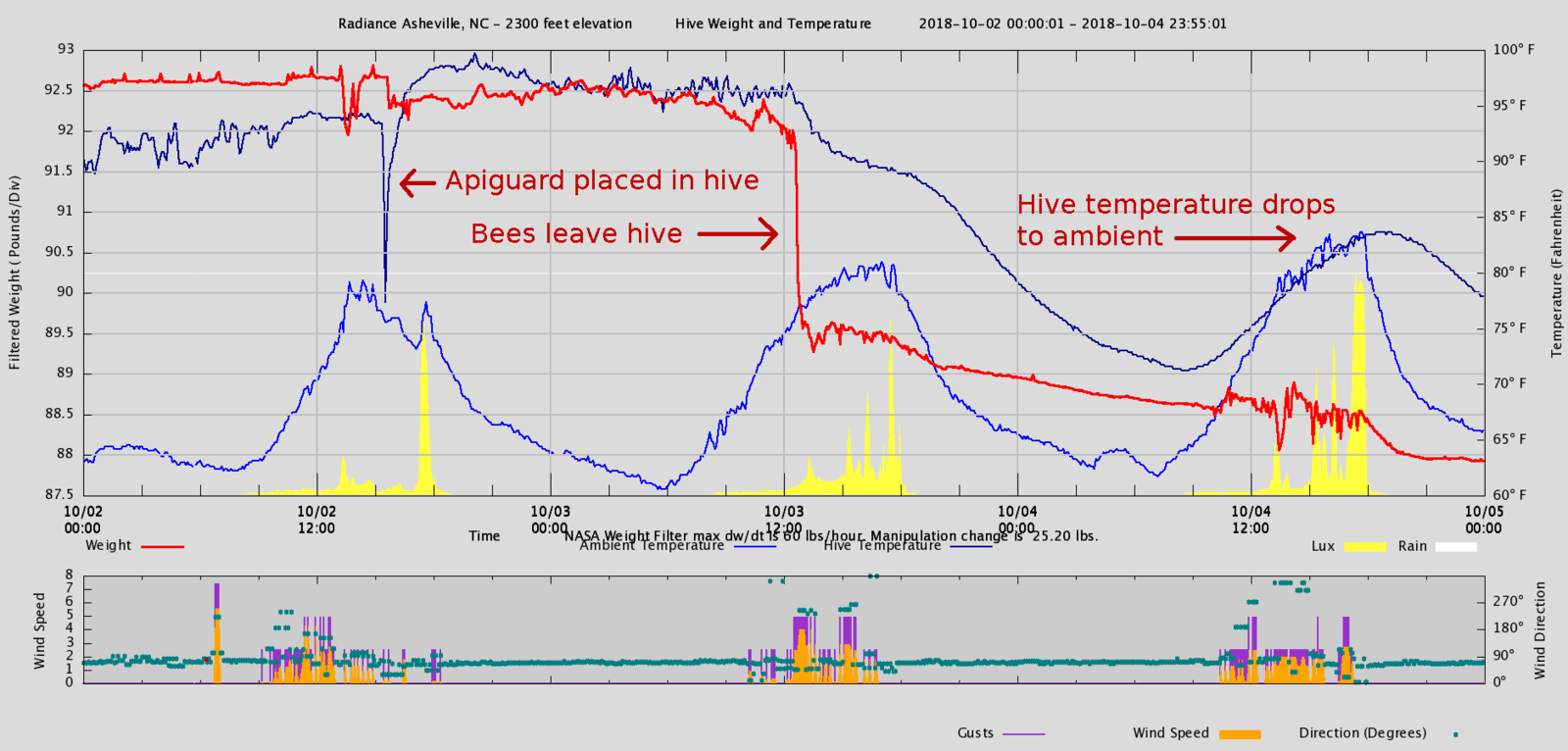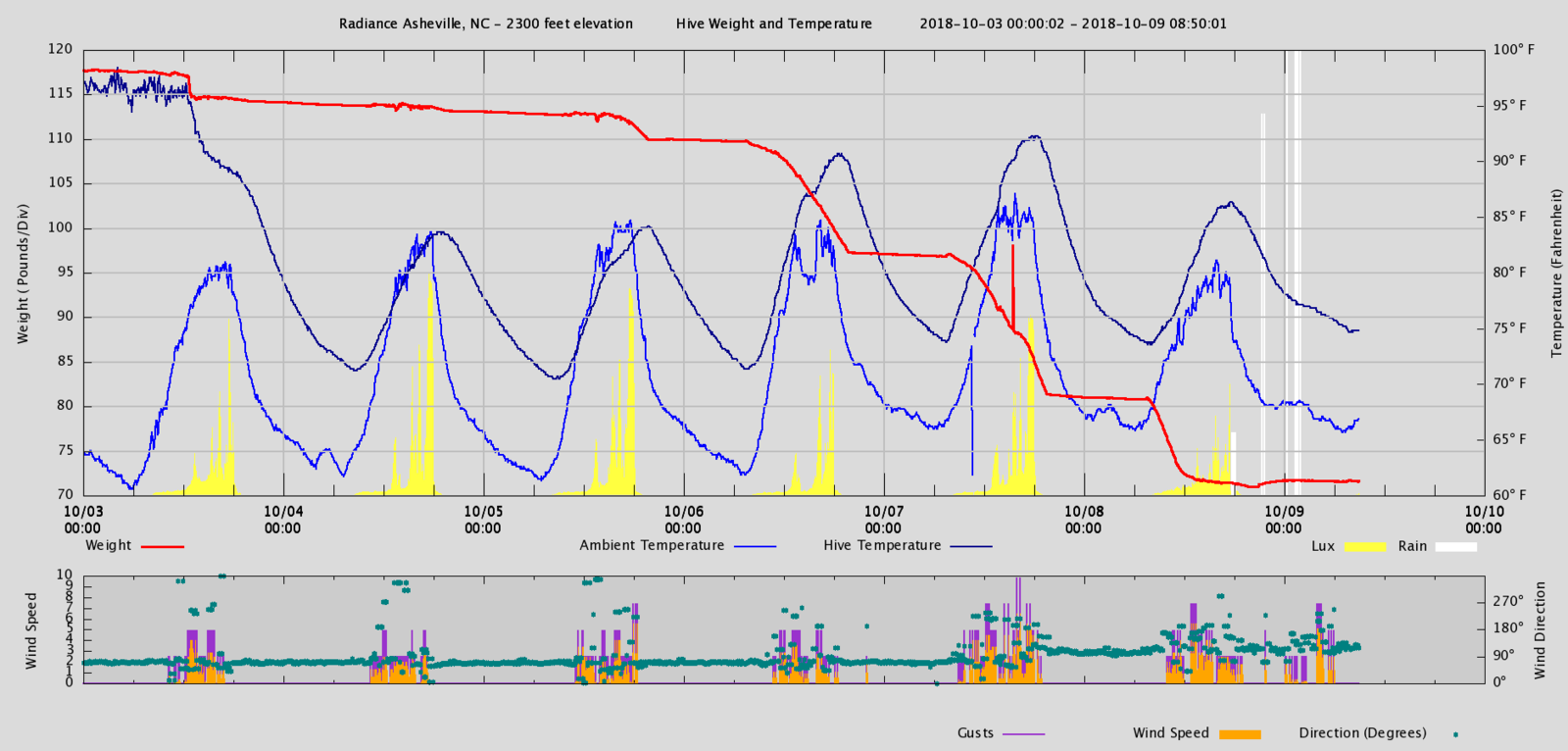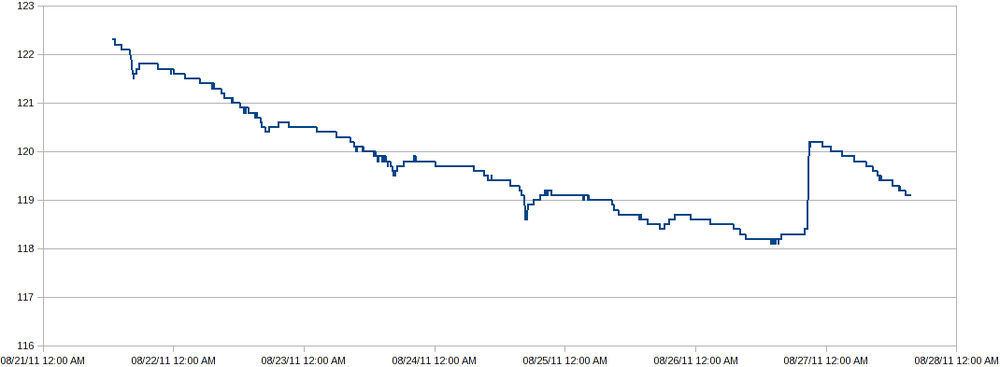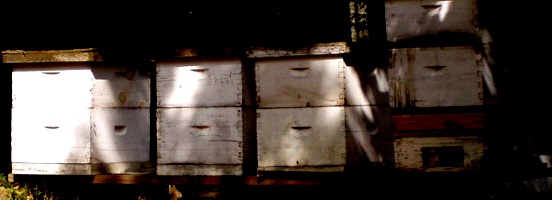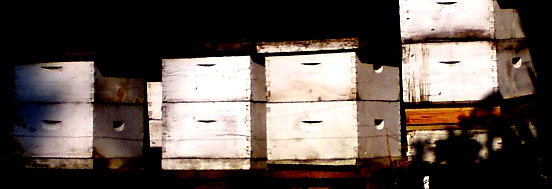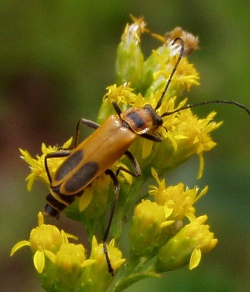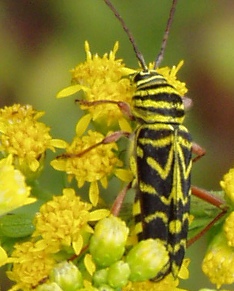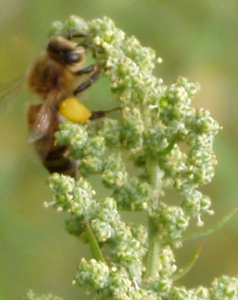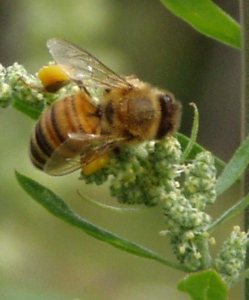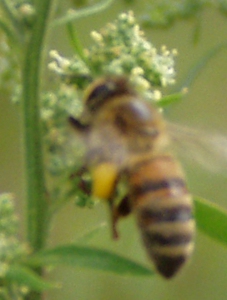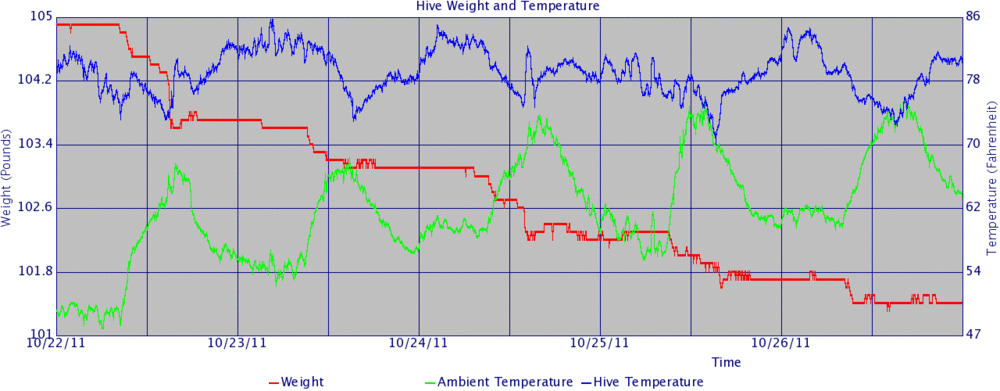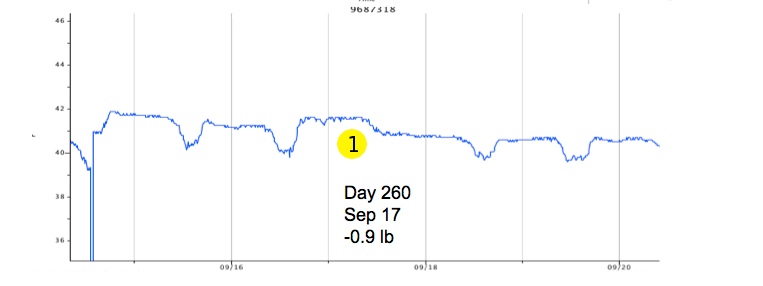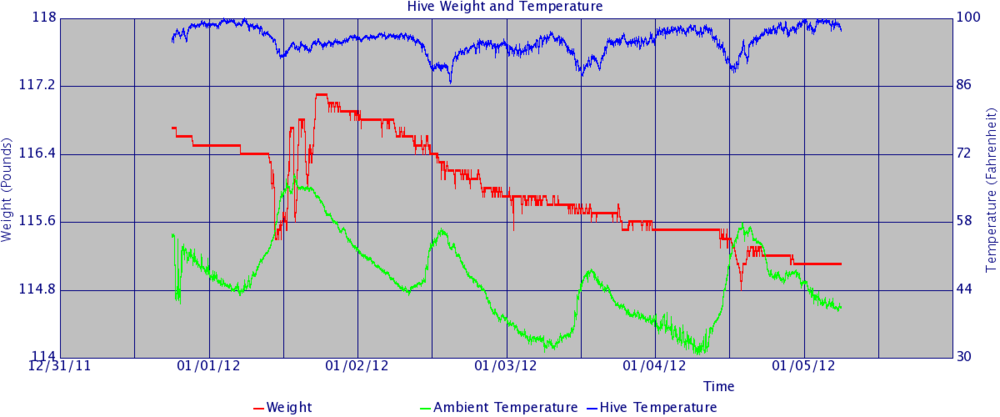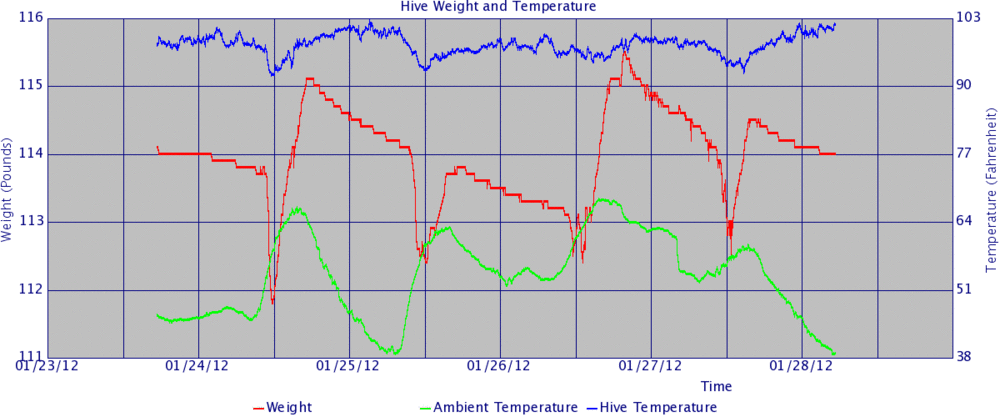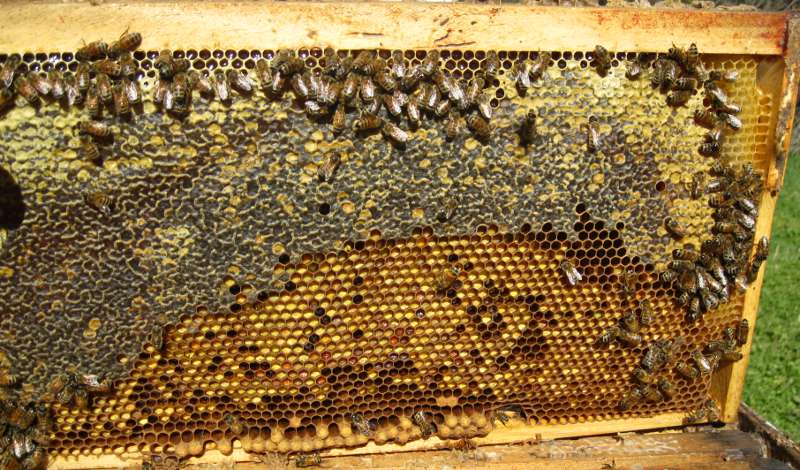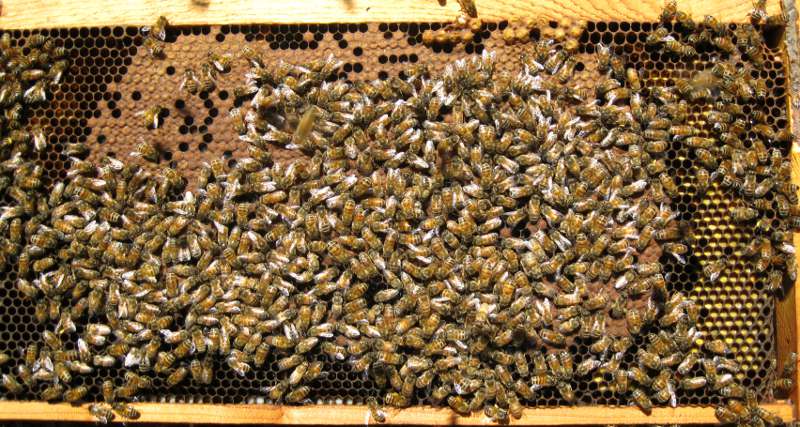Difference between revisions of "Hive Management"
(→Orientation or Play Flight) |
(→Spring Nectar Flow) |
||
| (58 intermediate revisions by the same user not shown) | |||
| Line 2: | Line 2: | ||
Below are graphs (weight and temperature signatures) of hive activity and their possible interpretations. | Below are graphs (weight and temperature signatures) of hive activity and their possible interpretations. | ||
| + | |||
| + | == Robbing == | ||
| + | Robbing can be distinguished from a nectar flow in that it only lasts a day or two, has little evaporation loss at night, and occurs when nothing is coming in. [[Management: Robbing|More examples of Robbing can be found on the Management: Robbing page.]] | ||
| + | |||
| + | This example is from Athens, Georgia, USA on June 30, 2018. Nothing was coming in, there was metabolic loss for the three days prior to the robbing and the three days after the robbing. This hive gained 20 lbs in one day! | ||
| + | ] | ||
| + | [[File:Athens robbing 20180704.png|1600px]] | ||
| + | |||
| + | ==Absconding== | ||
| + | |||
| + | On October 2, 2018, the hive was inspected, fed, and treated for mites with 50 grams of Apiguard thymol gel. (The weight changes due to these manipulation changes have been filter out for clarity.) The next day, October 3rd, a small swarm was noticed on a limb in the apiary. They left before they could be captured. Notice that by noon on October 4th the inside hive temperature equaled the outside temperature - never a good sign. | ||
| + | |||
| + | [[File:Radiance abscond 20181004-2.png|1600px]] | ||
| + | |||
| + | {| class="wikitable" style="float:right; margin-left: 10px; margin-right: 100px; | ||
| + | |- | ||
| + | ! scope="col"| Date | ||
| + | ! scope="col"| Weight Loss | ||
| + | |- | ||
| + | | October 5 | ||
| + | | 3.13 lbs | ||
| + | |- | ||
| + | | October 6 | ||
| + | | 12.85 lbs | ||
| + | |- | ||
| + | | October 7 | ||
| + | | 16.07 lbs | ||
| + | |- | ||
| + | | October 8 | ||
| + | | 9.35 lbs | ||
| + | |- | ||
| + | | October 9 | ||
| + | | .64 lbs | ||
| + | |} | ||
| + | Two days later, did the bees come back for their honey? For three and a half days, October 5th through the 8th, the hive lost weight at a linear rate, indicating limited resources. If this had been robbing, the rate of loss would have accelerated as more and more bees from more and more hives got involved. The bees removed about 40 lbs of honey. | ||
| + | |||
| + | [[File:Radiance abscond 20181009.png|1600px]] | ||
| + | |||
| + | |||
| + | [[Management: Absconding|More on absconding can be found on the Management: Absconding page.]] | ||
== Orientation or Play Flight == | == Orientation or Play Flight == | ||
| − | [[ | + | [[File:playflight.png|1000px]] |
<table cellpadding="10"> | <table cellpadding="10"> | ||
| Line 41: | Line 81: | ||
Playflight Trigger | Playflight Trigger | ||
| − | <table> | + | {| class="wikitable" style="vertical-align:top;" |
| + | |||
| + | |In these two photos, the scale hive is on the right. The top photo was taken about 3:45 PM on the afternoon of August 23, 2011. Note that the left hive is in the sun, while the three hives to the right are shaded. | ||
| + | |||
| + | |||
| + | The bottom photo was taken about 30 minutes later. The sun has shifted enough so now the three hives on the right are in the sun, while the left hive is beginning to be shaded. | ||
| + | |||
| + | |[[File:playflight1c2.jpg]] | ||
| + | [[File:playflight3c2.jpg]] | ||
| + | |} | ||
| + | |||
| + | |||
| + | ==Pollen Flow== | ||
| + | [[File:Pollen.png|1000px]] | ||
| + | <br><br> | ||
| + | A rapid rise in hive weight was noted from 9:15 am to 11:15 am on 9/4/2011. The bees left the hive around 8 am and quickly began returning loaded with pollen. Notice that the pollen stopped coming in before noon and there was no weight loss in the afternoon due to evaporation (it was not nectar). Most of the bees landing at the hive were loaded with bright yellow pollen. | ||
| + | <br><br> | ||
| + | {| style="vertical-align:top;" | ||
| + | |style="width: 250px;vertical-align:top;text-align: center;background-color: #E5E5E5"|Data Log | ||
| + | <code> | ||
| + | 2011/09/04 09:15 + 115.1 lb | ||
| + | 2011/09/04 09:20 + 115.1 lb<br> | ||
| + | 2011/09/04 09:25 + 115.2 lb<br> | ||
| + | 2011/09/04 09:30 + 115.2 lb<br> | ||
| + | 2011/09/04 09:35 + 115.3 lb<br> | ||
| + | 2011/09/04 09:40 + 115.3 lb<br> | ||
| + | 2011/09/04 09:45 + 115.3 lb<br> | ||
| + | 2011/09/04 09:50 + 115.4 lb<br> | ||
| + | 2011/09/04 09:55 + 115.4 lb<br> | ||
| + | 2011/09/04 10:00 + 115.4 lb<br> | ||
| + | 2011/09/04 10:05 + 115.4 lb<br> | ||
| + | 2011/09/04 10:10 + 115.5 lb<br> | ||
| + | 2011/09/04 10:15 + 115.5 lb<br> | ||
| + | 2011/09/04 10:20 + 115.5 lb<br> | ||
| + | 2011/09/04 10:25 + 115.6 lb<br> | ||
| + | 2011/09/04 10:30 + 115.6 lb<br> | ||
| + | 2011/09/04 10:35 + 115.7 lb<br> | ||
| + | 2011/09/04 10:40 + 115.7 lb<br> | ||
| + | 2011/09/04 10:45 + 115.7 lb<br> | ||
| + | 2011/09/04 10:50 + 115.7 lb<br> | ||
| + | 2011/09/04 10:55 + 115.7 lb<br> | ||
| + | 2011/09/04 10:57 + 115.7 lb<br> | ||
| + | 2011/09/04 11:00 + 115.7 lb<br> | ||
| + | 2011/09/04 11:05 + 115.8 lb<br> | ||
| + | 2011/09/04 11:10 + 115.8 lb<br> | ||
| + | </code> | ||
| + | |style="background-color: white;"| | ||
| + | |||
| + | {| class="wikitable" style="vertical-align:top; align=right;" | ||
| + | |- | ||
| + | |style="width: 250px;"| | ||
| + | Right: No bees were seen on on goldenrod.<br><br>Below: Numerous bees were observed on lambs quarter: | ||
| + | |style="width: 250px;"| [[File:goldenrod1_250.jpg]] | ||
| + | |style="width: 250px;"| [[File:goldenrod2_234.jpg]] | ||
| + | |- | ||
| + | |[[File:lambsquarter1_300.jpg|250px]] | ||
| + | |[[File:lambsquarter2_300.jpg|250px]] | ||
| + | |[[File:lambsquarter3_300.jpg|250px]] | ||
| + | |} | ||
| + | |||
| + | |} | ||
| + | |||
| + | ==Brood Chamber Temperatures== | ||
| + | [[File:hive_graph_2011_brood.gif|1000px]] | ||
| + | |||
| + | ==Fall Die Off== | ||
| + | [[File:hive_graph_20111026_fall_die_off.gif|1000px]] | ||
| + | |||
| + | I'm calling this "Fall Die Off" for a lack of a better understanding of what is going on. Note that the brood temperature has dropped to 85 degrees from 95 degrees. | ||
| + | |||
| + | |||
| + | In the graph below, courtesy of Dr. Wayne Esaias, GSFC, NASA, it is referred to as "They left and didn't come back". | ||
| + | |||
| + | [[File:NASA_Fall_loss_figs.png]] | ||
| + | |||
| + | <br>Possibilities: | ||
| + | #Death of bees maybe due to pesticides. | ||
| + | #Death of 'summer bee' foragers that get carted away (death might occur mostly during cold nights) | ||
| + | #Fall drone massacre/death | ||
| + | #Robbing (lots of chronic, sneaky, petty larceny this time of yr) | ||
| + | #Hive drying out during daytime (usually Sept nights here are very humid, lots of dew, not good for drying) | ||
| + | #Something else | ||
| + | == Hive Relocation == | ||
| + | [[File:hive_graph_20111111_athens_move.gif|1000px]] | ||
| + | Late in the afternoon on Friday, November 4th the hives were moved from Sky Valley, Ga (elevation 3700 feet) and set up Saturday morning, November 5th in Athens, Ga (elevation 700 feet). | ||
| + | <p> | ||
| + | 1. On Sunday, November 6th, at 2:00 pm bees left the hive.<br> | ||
| + | 2. A short time later, about half of them came back.<br> | ||
| + | 3. Late in the afternoon of the next day, between 5:00 pm and 7:30 pm, most of the bees had returned.<br> | ||
| + | 4. The hive computer was accidentally turned of Sunday night and turned on Monday morning.<br> | ||
| + | 5. The bees left the next morning started bringing back food. Perhaps another source was found as more bees left,<br> | ||
| + | 6. and brought back more food.<br> | ||
| + | 7. The next morning the bees left early and soon returned with food.<br> | ||
| + | 8. Perhaps additional foraging sources were found.<br> | ||
| + | 9. Rain. Notice that the weight immediately starts rising. No bees had left the hive.<br> | ||
| + | 10. Rain evaporating from the outside of the hive. Note the faster evaporation rate compared to the nectar evaporation between 8 and 9.<br> | ||
| + | |||
| + | == Wind and Rain == | ||
| + | |||
| + | [[File:hive_graph_20120105_wind.png|1000px]] | ||
| + | |||
| + | |||
| + | |||
| + | == Spring Build Up == | ||
| + | [[File:hive_graph_20120128.gif|1000px]] | ||
| + | |||
| + | On January 24th the foragers left in a large number, were not gone long, and returned with over a pound of something (probably water). Then, the next day, they were gone longer and didn't come back with much (probably pollen). | ||
| + | |||
| + | Looking at the data from January 10 through January 30, it appears they brought back water several times, with increasing frequency. | ||
| + | <br> | ||
| + | |||
| + | [[File:hive_graph_spring1.gif|thumb|1000px]] | ||
| + | |||
| + | <table> | ||
| + | <tr> | ||
| + | <td>[[File:foragers_pollen1.jpg]]</td> | ||
| + | <td>[[File:foragers_pollen2.jpg]]</td> | ||
| + | <td>[[File:foragers_pollen3.jpg]]</td> | ||
| + | </tr> | ||
| + | </table> | ||
| + | {| | ||
| + | |Courtesy of Dr. Wayne Esaias, [[href=http://honeybeenet.gsfc.nasa.gov| Honey Bee Net]] at NASA's Goddard Space Flight Center: | ||
| + | |||
| + | "The bees are bringing in lots of water, adding to the weight. They must add water to the honey, otherwise the osmotic concentration is too high for feeding to larvae. Think about how 'runny' a squashed bee larva is compared to honey. That comes from the water they bring in. | ||
| + | |||
| + | Colony respiration is a positive relation to temperature. Higher at higher temps. | ||
| + | The more rapid loss is from increased metabolic activity due to more flying, and having to raise the brood area temp. The higher metabolic activity results in a weight loss as mass is respired, and colony loss rates increase - more dying and defecation. | ||
| + | |||
| + | Think of it this way. Imagine sitting on a scale yourself, with your lunchbox on your lap. Record the weight. Now eat your sandwich and drink your tea. The total weight did not change. Get up, visit the bathroom as nature calls. Get back on and the weight is less. Eating your stores did not change the weight. Metabolic activity and elimination did. There was actually a very slow weight loss due to your respiration and loss of CO2 and H20 in your breath. But eating what was already on the scale did not cause a weight loss, but eating is necessary for the loss to occur. The lunchbox will not lose weight unless you eat the sandwich." | ||
| + | |||
| + | |||
| + | |[[File:foragers_pollen4.jpg|thumb|1000px]] | ||
| + | [[File:foragers_pollen5.jpg|thumb|1000px]] | ||
| + | |} | ||
| + | |||
| + | == Spring Nectar Flow == | ||
| + | |||
| + | Adding and removing honey supers is best managed by knowing the beginning and end of nectar flows. This hive experienced a 90 pound weight gain in just three weeks! | ||
| + | <br> | ||
| + | [[File:daily_filtered_20120406_spring_flow.gif|1000px]] | ||
| + | [[File:athens_march.gif|1000px]] | ||
| + | [[File:athens_march_all.gif|1000px]] | ||
| + | <br><br> | ||
| + | |||
| + | <table border=1> | ||
| + | <tr><td>Date</td><td>Day of Year</td><td>GDD*</td><td>Weight</td><td>Manipulation Change</td><td>Delta Weight</td></tr> | ||
| + | <tr><td> 2012/03/12</td><td>72</td><td>748</td><td> 140.1</td><td> 48.3</td><td> 1.3</td></tr> | ||
| + | <tr><td> 2012/03/13</td><td>73</td><td>766</td><td> 140.9</td><td> 48.3</td><td> 0.8</td></tr> | ||
| + | <tr><td> 2012/03/14</td><td>74</td><td>793</td><td> 143.2</td><td> 48.3</td><td> 2.3</td></tr> | ||
| + | <tr><td> 2012/03/15</td><td>75</td><td></td><td> 128.5</td><td> 30.3</td><td> 3.3</td></tr> | ||
| + | <tr><td> 2012/03/16</td><td>76</td><td></td><td> 133.2</td><td> 30.3</td><td> 4.7</td></tr> | ||
| + | <tr><td> 2012/03/17</td><td>77</td><td></td><td> 133.1</td><td> 30.3</td><td>-0.1</td></tr> | ||
| + | <tr><td> 2012/03/18</td><td>78</td><td></td><td> 136.7</td><td> 30.3</td><td> 3.6</td></tr> | ||
| + | <tr><td> 2012/03/19</td><td>79</td><td></td><td> 143.4</td><td> 30.3</td><td> 6.7</td></tr> | ||
| + | <tr><td> 2012/03/20</td><td>80</td><td></td><td> 151.1</td><td> 30.3</td><td> 7.7</td></tr> | ||
| + | <tr><td> 2012/03/21</td><td>81</td><td></td><td> 155.9</td><td> 30.3</td><td> 4.8</td></tr> | ||
| + | <tr><td> 2012/03/22</td><td>82</td><td></td><td> 159.2</td><td> 30.3</td><td> 3.3</td></tr> | ||
| + | <tr><td> 2012/03/23</td><td>83</td><td></td><td> 162.5</td><td> 30.3</td><td> 3.3</td></tr> | ||
| + | <tr><td> 2012/03/24</td><td>84</td><td></td><td> 165.0</td><td> 30.3</td><td> 2.5</td></tr> | ||
| + | <tr><td> 2012/03/25</td><td>85</td><td></td><td> 169.2</td><td> 30.3</td><td> 4.2</td></tr> | ||
| + | <tr><td> 2012/03/26</td><td>86</td><td></td><td> 178.0</td><td> 30.3</td><td> 8.8</td></tr> | ||
| + | <tr><td> 2012/03/27</td><td>87</td><td></td><td> 180.4</td><td> 30.3</td><td> 2.4</td></tr> | ||
| + | <tr><td> 2012/03/28</td><td>88</td><td></td><td> 189.5</td><td> 30.3</td><td> 9.1</td></tr> | ||
| + | <tr><td> 2012/03/29</td><td>89</td><td></td><td> 197.8</td><td> 30.3</td><td> 8.3</td></tr> | ||
| + | <tr><td> 2012/03/30</td><td>90</td><td>1230</td><td> 202.5</td><td> 30.3</td><td> 4.7</td></tr> | ||
| + | <tr><td> 2012/03/31</td><td>91</td><td>1259</td><td> 203.1</td><td> 30.3</td><td> 0.6</td></tr> | ||
| + | <tr><td> 2012/04/01</td><td>92</td><td>1287</td><td> 206.5</td><http://uspest.org/cgi-bin/ddmodel.us td> 30.3</td><td> 3.4</td></tr> | ||
| + | <tr><td> 2012/04/02</td><td>93</td><td>1319</td><td> 209.5</td><td> 30.3</td><td> 3.0</td></tr> | ||
| + | <tr><td> 2012/04/03</td><td>94</td><td>1350</td><td> 210.4</td><td> 30.3</td><td> 0.9</td></tr> | ||
| + | <tr><td colspan=4> 23 Day Total Weight Gain</td><td>89.6</td></tr> | ||
| + | </table> | ||
| + | |||
| + | * GDD Growing Degree Day data from http://pnwpest.org/ at the Integrated Plant Protection Center | ||
| + | of Oregon State University. | ||
| + | |||
| + | == Mathematical Model == | ||
| + | <table align=center> | ||
| + | <tr> | ||
| + | <td align=right>ΔHive Weight</td><td align=left> = Weight Gain - Weight Loss</td><td><br>[1]<br><br></td> | ||
| + | </tr> | ||
| + | |||
| + | <tr> | ||
| + | <td align=right>Weight Gain</td><td> = Nectar + Pollen + water + brood growth | ||
| + | + bee growth + landings + FOD</td><td><br>[2]<br><br></td> | ||
| + | </tr> | ||
| + | |||
| + | <tr> | ||
| + | <td align=right>Weight Loss</td><td> = Evaporation + Metabolic activity (respiration) | ||
| + | + bee deaths + waste elimination + take offs</td><td><br>[3]<br><br></td> | ||
| + | </tr> | ||
| + | |||
| + | <tr> | ||
| + | <td align=right>Evaporation</td><td> = (Nectar<sub>t0</sub>)*ER + (Nectar<sub>t-1</sub>)*2/3*ER + (Nectar<sub>t-2</sub>)*1/3*ER</td><td><br>[4]<br><br></td> | ||
| + | </tr> | ||
| + | <tr> | ||
| + | <td align=right></td><td>where</td><td><br><br><br></td> | ||
| + | </tr> | ||
| + | |||
| + | <tr> | ||
| + | <td align=right>Evaporation Rate (ER) </td><td> ~ <u>(Water Content * Temperature * Wind)</u><br> Humidity</td><td><br>[5]<br><br></td> | ||
| + | </tr> | ||
| + | |||
| + | <tr> | ||
| + | <td colspan=3>FOD (Foreign Object or Debris): Rain, animals, branch, rock</td> | ||
| + | </tr> | ||
| + | </table> | ||
| + | |||
| + | == Predicting Nectar Flows == | ||
| + | <table align=center width=800px bgcolor=DDDDDD cellpadding=20px> | ||
<tr> | <tr> | ||
| − | <td width= | + | <td width=50%> |
| − | + | <b>Forage plant abundance</b> | |
| + | <ul> | ||
| + | <li>plant population age structure</li> | ||
| + | </ul> | ||
| + | |||
| + | <b>Soil</b> | ||
| + | <ul> | ||
| + | <li>pH</li> | ||
| + | <li>Nutrients</li> | ||
| + | <li>Moisture</li> | ||
| + | <li>Drainage</li> | ||
| + | </ul> | ||
| + | |||
| + | <b>Weather</b> | ||
| + | <ul> | ||
| + | <li>rain - soil moisture</li> | ||
| + | <li>rainy days during nectar flow</li> | ||
| + | <li>drought</li> | ||
| + | <li>temperature</li> | ||
| + | <li>humidity</li> | ||
| + | </ul> | ||
| − | |||
</td> | </td> | ||
| − | <td | + | <td> |
| − | + | ||
| − | + | <b>Temperature</b> | |
| + | <ul> | ||
| + | <li>late spring freeze</li> | ||
| + | <li>hot dry summer</li> | ||
| + | <li>cool wet summer</li> | ||
| + | <li>harsh winter</li> | ||
| + | </ul> | ||
| + | |||
| + | <b>Orientation</b> | ||
| + | <ul> | ||
| + | <li>north/south slope</li> | ||
| + | </ul> | ||
| + | |||
| + | <b>Past History</b> | ||
| + | <ul> | ||
| + | <li>alternate year dependencies</li> | ||
| + | </ul> | ||
</td> | </td> | ||
</tr> | </tr> | ||
| + | </table> | ||
| + | |||
| + | </td></tr> | ||
</table> | </table> | ||
Latest revision as of 04:23, 21 March 2019
Knowing what is happening in the hive is crucial to proper hive management. By knowing the beginning, end, and quantity of nectar flows, bee keepers can determine when to add and remove supers, when to move hives and where to locate hives to maximize honey production. By knowing the amount of young bees engaged in playflight, it is possible to calculate the strength of the hive and egg laying ability of the queen.
Below are graphs (weight and temperature signatures) of hive activity and their possible interpretations.
Contents
Robbing
Robbing can be distinguished from a nectar flow in that it only lasts a day or two, has little evaporation loss at night, and occurs when nothing is coming in. More examples of Robbing can be found on the Management: Robbing page.
This example is from Athens, Georgia, USA on June 30, 2018. Nothing was coming in, there was metabolic loss for the three days prior to the robbing and the three days after the robbing. This hive gained 20 lbs in one day!
]
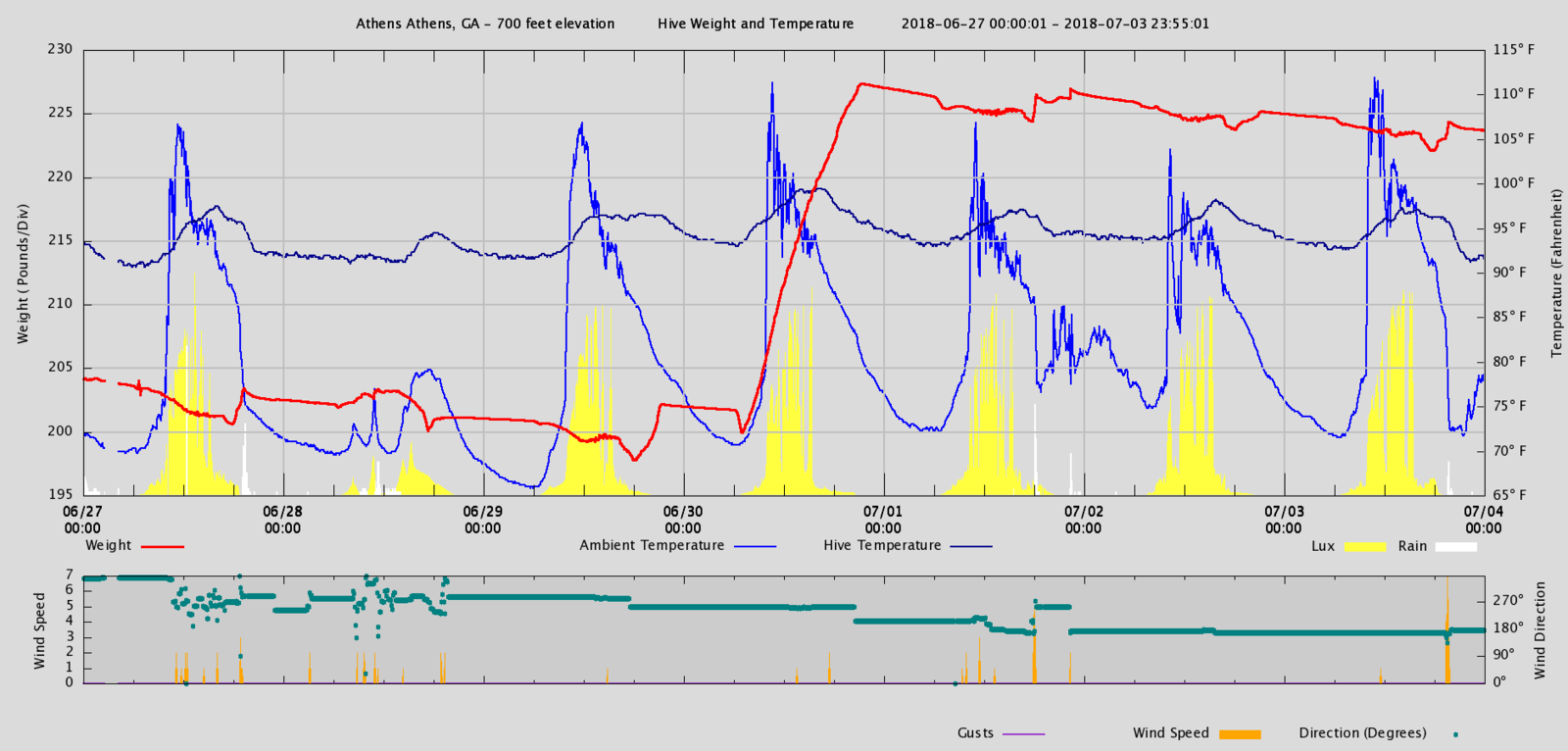
Absconding
On October 2, 2018, the hive was inspected, fed, and treated for mites with 50 grams of Apiguard thymol gel. (The weight changes due to these manipulation changes have been filter out for clarity.) The next day, October 3rd, a small swarm was noticed on a limb in the apiary. They left before they could be captured. Notice that by noon on October 4th the inside hive temperature equaled the outside temperature - never a good sign.
| Date | Weight Loss |
|---|---|
| October 5 | 3.13 lbs |
| October 6 | 12.85 lbs |
| October 7 | 16.07 lbs |
| October 8 | 9.35 lbs |
| October 9 | .64 lbs |
Two days later, did the bees come back for their honey? For three and a half days, October 5th through the 8th, the hive lost weight at a linear rate, indicating limited resources. If this had been robbing, the rate of loss would have accelerated as more and more bees from more and more hives got involved. The bees removed about 40 lbs of honey.
More on absconding can be found on the Management: Absconding page.
Orientation or Play Flight
|
Data Log
|
At 4:30 pm on August 21st, 2011, a sudden drop in hive weight, at times as much as .1 lb per 5 minutes, was noticed. From the weight loss, here 0.6 lbs (122.1 - 121.5), a rough estimate of the number of bees engaging in playflight can be calculated. Assuming 3000 bees per pound, approximately 1800 bees were flying (0.6 lb x 3000 bees/lb). This behavior was observed for 5 consecutive days until it rained. By knowing the amount of young bees engaged in playflight, it should be possible to calculate the strength of the hive and egg laying ability of the queen. |
Playflight Trigger
Pollen Flow
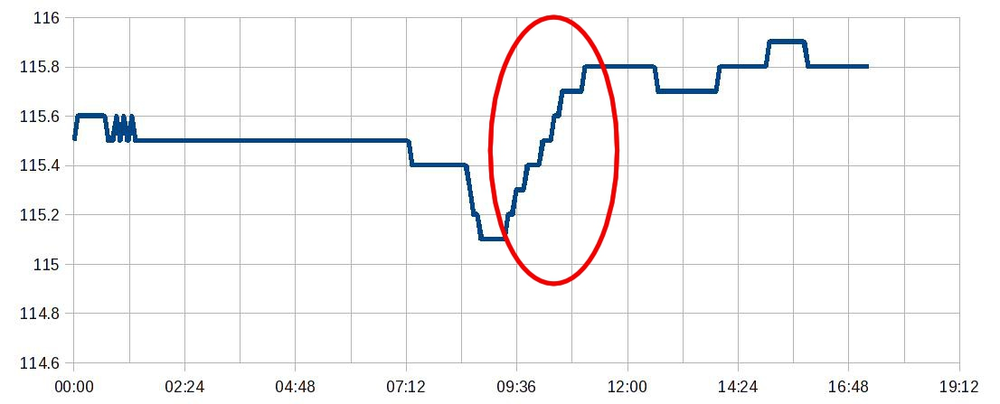
A rapid rise in hive weight was noted from 9:15 am to 11:15 am on 9/4/2011. The bees left the hive around 8 am and quickly began returning loaded with pollen. Notice that the pollen stopped coming in before noon and there was no weight loss in the afternoon due to evaporation (it was not nectar). Most of the bees landing at the hive were loaded with bright yellow pollen.
Brood Chamber Temperatures
Fall Die Off
I'm calling this "Fall Die Off" for a lack of a better understanding of what is going on. Note that the brood temperature has dropped to 85 degrees from 95 degrees.
In the graph below, courtesy of Dr. Wayne Esaias, GSFC, NASA, it is referred to as "They left and didn't come back".
Possibilities:
- Death of bees maybe due to pesticides.
- Death of 'summer bee' foragers that get carted away (death might occur mostly during cold nights)
- Fall drone massacre/death
- Robbing (lots of chronic, sneaky, petty larceny this time of yr)
- Hive drying out during daytime (usually Sept nights here are very humid, lots of dew, not good for drying)
- Something else
Hive Relocation
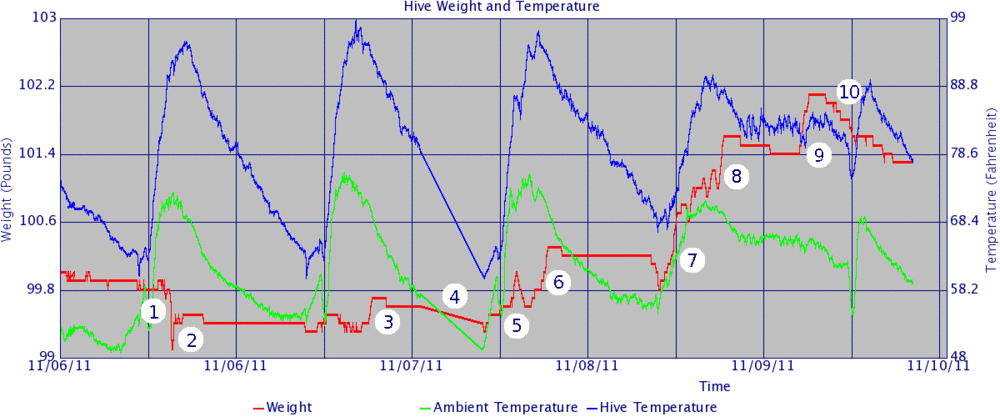 Late in the afternoon on Friday, November 4th the hives were moved from Sky Valley, Ga (elevation 3700 feet) and set up Saturday morning, November 5th in Athens, Ga (elevation 700 feet).
Late in the afternoon on Friday, November 4th the hives were moved from Sky Valley, Ga (elevation 3700 feet) and set up Saturday morning, November 5th in Athens, Ga (elevation 700 feet).
1. On Sunday, November 6th, at 2:00 pm bees left the hive.
2. A short time later, about half of them came back.
3. Late in the afternoon of the next day, between 5:00 pm and 7:30 pm, most of the bees had returned.
4. The hive computer was accidentally turned of Sunday night and turned on Monday morning.
5. The bees left the next morning started bringing back food. Perhaps another source was found as more bees left,
6. and brought back more food.
7. The next morning the bees left early and soon returned with food.
8. Perhaps additional foraging sources were found.
9. Rain. Notice that the weight immediately starts rising. No bees had left the hive.
10. Rain evaporating from the outside of the hive. Note the faster evaporation rate compared to the nectar evaporation between 8 and 9.
Wind and Rain
Spring Build Up
On January 24th the foragers left in a large number, were not gone long, and returned with over a pound of something (probably water). Then, the next day, they were gone longer and didn't come back with much (probably pollen).
Looking at the data from January 10 through January 30, it appears they brought back water several times, with increasing frequency.
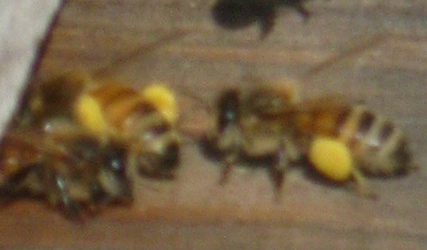 |
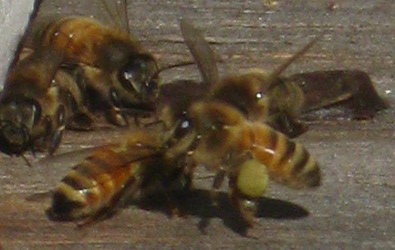 |
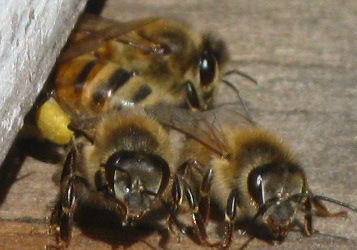 |
| Courtesy of Dr. Wayne Esaias, Honey Bee Net at NASA's Goddard Space Flight Center:
"The bees are bringing in lots of water, adding to the weight. They must add water to the honey, otherwise the osmotic concentration is too high for feeding to larvae. Think about how 'runny' a squashed bee larva is compared to honey. That comes from the water they bring in. Colony respiration is a positive relation to temperature. Higher at higher temps. The more rapid loss is from increased metabolic activity due to more flying, and having to raise the brood area temp. The higher metabolic activity results in a weight loss as mass is respired, and colony loss rates increase - more dying and defecation. Think of it this way. Imagine sitting on a scale yourself, with your lunchbox on your lap. Record the weight. Now eat your sandwich and drink your tea. The total weight did not change. Get up, visit the bathroom as nature calls. Get back on and the weight is less. Eating your stores did not change the weight. Metabolic activity and elimination did. There was actually a very slow weight loss due to your respiration and loss of CO2 and H20 in your breath. But eating what was already on the scale did not cause a weight loss, but eating is necessary for the loss to occur. The lunchbox will not lose weight unless you eat the sandwich."
|
Spring Nectar Flow
Adding and removing honey supers is best managed by knowing the beginning and end of nectar flows. This hive experienced a 90 pound weight gain in just three weeks!

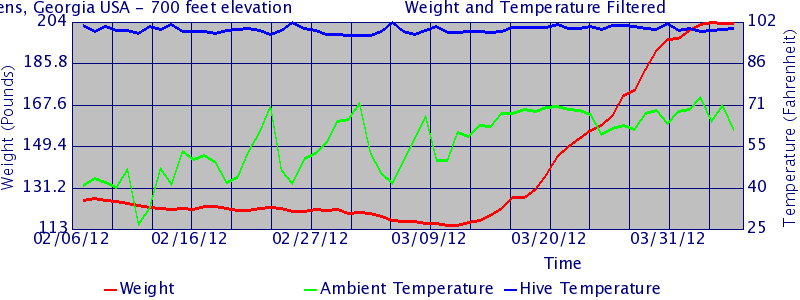
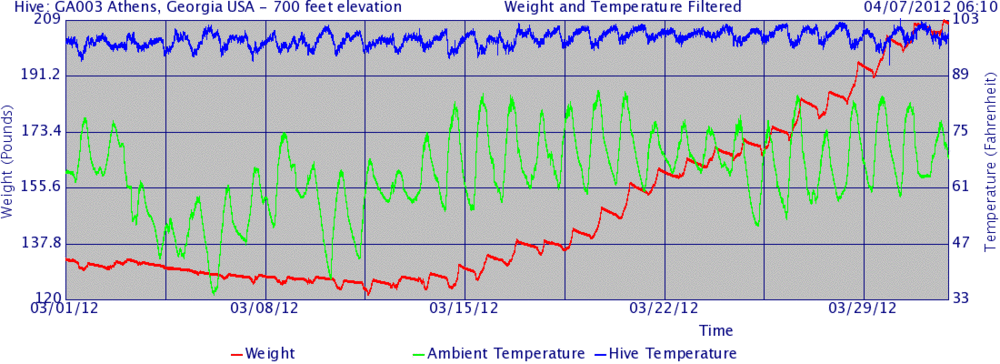
| Date | Day of Year | GDD* | Weight | Manipulation Change | Delta Weight |
| 2012/03/12 | 72 | 748 | 140.1 | 48.3 | 1.3 |
| 2012/03/13 | 73 | 766 | 140.9 | 48.3 | 0.8 |
| 2012/03/14 | 74 | 793 | 143.2 | 48.3 | 2.3 |
| 2012/03/15 | 75 | 128.5 | 30.3 | 3.3 | |
| 2012/03/16 | 76 | 133.2 | 30.3 | 4.7 | |
| 2012/03/17 | 77 | 133.1 | 30.3 | -0.1 | |
| 2012/03/18 | 78 | 136.7 | 30.3 | 3.6 | |
| 2012/03/19 | 79 | 143.4 | 30.3 | 6.7 | |
| 2012/03/20 | 80 | 151.1 | 30.3 | 7.7 | |
| 2012/03/21 | 81 | 155.9 | 30.3 | 4.8 | |
| 2012/03/22 | 82 | 159.2 | 30.3 | 3.3 | |
| 2012/03/23 | 83 | 162.5 | 30.3 | 3.3 | |
| 2012/03/24 | 84 | 165.0 | 30.3 | 2.5 | |
| 2012/03/25 | 85 | 169.2 | 30.3 | 4.2 | |
| 2012/03/26 | 86 | 178.0 | 30.3 | 8.8 | |
| 2012/03/27 | 87 | 180.4 | 30.3 | 2.4 | |
| 2012/03/28 | 88 | 189.5 | 30.3 | 9.1 | |
| 2012/03/29 | 89 | 197.8 | 30.3 | 8.3 | |
| 2012/03/30 | 90 | 1230 | 202.5 | 30.3 | 4.7 |
| 2012/03/31 | 91 | 1259 | 203.1 | 30.3 | 0.6 |
| 2012/04/01 | 92 | 1287 | 206.5 | 3.4 | |
| 2012/04/02 | 93 | 1319 | 209.5 | 30.3 | 3.0 |
| 2012/04/03 | 94 | 1350 | 210.4 | 30.3 | 0.9 |
| 23 Day Total Weight Gain | 89.6 | ||||
- GDD Growing Degree Day data from http://pnwpest.org/ at the Integrated Plant Protection Center
of Oregon State University.
Mathematical Model
| ΔHive Weight | = Weight Gain - Weight Loss | [1] |
| Weight Gain | = Nectar + Pollen + water + brood growth + bee growth + landings + FOD | [2] |
| Weight Loss | = Evaporation + Metabolic activity (respiration) + bee deaths + waste elimination + take offs | [3] |
| Evaporation | = (Nectart0)*ER + (Nectart-1)*2/3*ER + (Nectart-2)*1/3*ER | [4] |
| where | ||
| Evaporation Rate (ER) | ~ (Water Content * Temperature * Wind) Humidity | [5] |
| FOD (Foreign Object or Debris): Rain, animals, branch, rock | ||
Predicting Nectar Flows
|
Forage plant abundance
Soil
Weather
|
Temperature
Orientation
Past History
|
